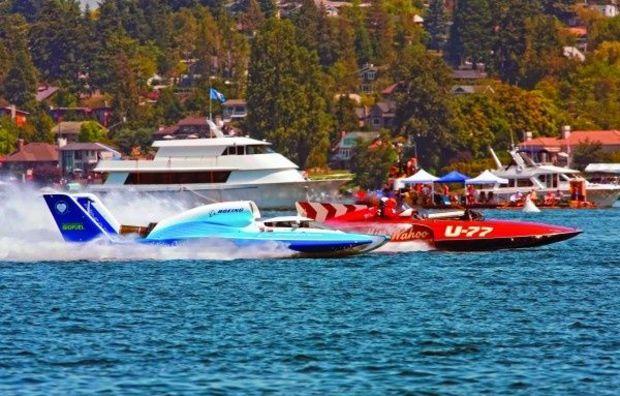 Will the Chesapeake Bay and the Potomac River return as go-to destinations for Unlimited Hydroplane racing? It’s an ongoing dream of racing enthusiasts thanks to a local boat racing history that dates back to 1926. Storied names in Thunder Boat history have been intertwined with the Bay since then.
Unlimited hydroplanes are huge race boats that throw rooster tails 75 feet in the air that then arc another 300 feet behind the propeller, since they ride on their prop and their two forward sponsons. These hydroplanes skid, catch, and then turn to navigate a marked course. With the challenges of managing the chop, boat wakes, and hull lift from rushing air during the race, boats often need to be “wrestled” more than “driven” into winning a competition heat and then the final race.
Famous boat names in this class have included Miss Budweiser, Miss U.S. 1, Hawaii Kai, Miss Thriftway, Miss Pepsi, and My Sweetie. Equally famous were the hydroplane designers and builders that included Ventnor Boat Works, Ted Jones, Les Staudacher, Dan Arena, Dodge, and John L. Hacker. Celebrities and other high-profile people have eagerly driven these hydroplanes in past President’s Cup events: Bill Muncey, Guy Lombardo, Gene Whipp, Bill Cantrell, Mira Slovak, Dan Arena, Harold Wilson, and George Reis.
Will the Chesapeake Bay and the Potomac River return as go-to destinations for Unlimited Hydroplane racing? It’s an ongoing dream of racing enthusiasts thanks to a local boat racing history that dates back to 1926. Storied names in Thunder Boat history have been intertwined with the Bay since then.
Unlimited hydroplanes are huge race boats that throw rooster tails 75 feet in the air that then arc another 300 feet behind the propeller, since they ride on their prop and their two forward sponsons. These hydroplanes skid, catch, and then turn to navigate a marked course. With the challenges of managing the chop, boat wakes, and hull lift from rushing air during the race, boats often need to be “wrestled” more than “driven” into winning a competition heat and then the final race.
Famous boat names in this class have included Miss Budweiser, Miss U.S. 1, Hawaii Kai, Miss Thriftway, Miss Pepsi, and My Sweetie. Equally famous were the hydroplane designers and builders that included Ventnor Boat Works, Ted Jones, Les Staudacher, Dan Arena, Dodge, and John L. Hacker. Celebrities and other high-profile people have eagerly driven these hydroplanes in past President’s Cup events: Bill Muncey, Guy Lombardo, Gene Whipp, Bill Cantrell, Mira Slovak, Dan Arena, Harold Wilson, and George Reis.
Black Sunday
In an unfortunate combination of circumstances, three of the sport’s drivers lost their lives in two separate crashes during The President’s Cup race on June 19, 1966. The first crash was caused by a broken prop blade on Musson’s Miss Bardalh Unlimited Hydroplane Thunder Boat. Ron was hot footing it down the straightaway when it happened. That prop imbalance threw the back end of his boat straight up into the air. The 30-foot hydroplane nose-dived to the bottom eight feet below at a speed of 160 mph. Boat historian Fitzsimmons is quoted as saying: “He came to a dead stop like a spade being shoved into a garden. Five thousand pounds of energy came crashing forward. The front (of the boat) literally disintegrated, and Ron Musson was killed. Every orifice of his body was filled with water by the impact speed. “As hydro accidents go, it was as horrific as anyone had ever seen,” Fitzsimmons said. “The rescue crew was stunned when they recovered his body. The impact was bone-crushing, like watching a head-on with a semi-truck. He never had a chance.” Some hours later, in another President’s Cup heat, Notre Dame and Miss Budweiser crashed into each other. Both drivers, Manchester and Wilson, were killed in that crash. The last time unlimited hydroplanes splashed in the Potomac River was a four-boat exhibition off-shore of the National Harbor in 2011. The one-day test of the river and facilities failed to convince organizers that a longer event was a great idea. Without a roaring cheer of support, that pre-event failed to bring the race back to the area in 2012. But is 2014 the year that we’ll have the roar off shore return? Do Bay-area racing fans want another try at a crowd pleaser President’s Cup race to come to the Potomac River and the Chesapeake Bay? Would we see 100,000 fans come to such an event? Let us know your thoughts by emailing [email protected].R/C Powerboat Racing: What’s Your Preference?
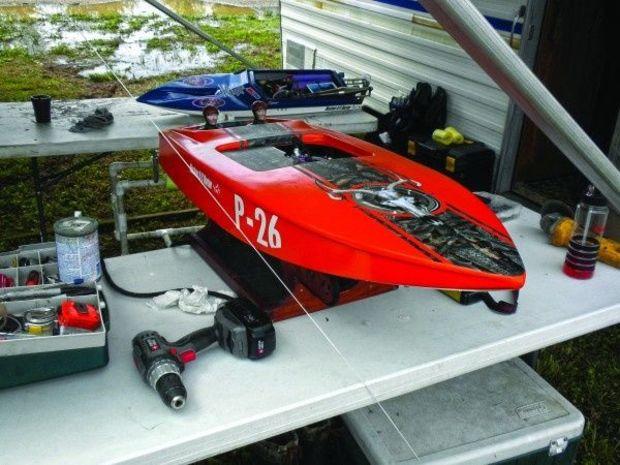 Today’s R/C (radio controlled) model powerboats include impressive electric race boats that are equally as fast as gas model scale powerboats. Both really speed and offer boat racing thrills to the spectator crowd. The increased power output coupled with the reduced weight of today’s batteries make the electric models a growing choice for model boaters who want a fast, easy, and clean boat set-up. Gas-powered R/C models have a longer history and still out-number electric boats at a typical event, but the electrics may give them a run for their money in the coming years.
The parent organization for R/C boat racing is the International Model Power Boat Association (IMPBA), established in 1949. In these early days, each model boat was attached to a tether in a marked-off pond area. There was a center pole in the pond and a 52’ 6” cable that “controlled” the boats around that defined circle during a race. Boats were timed for their racing speed in four laps around the circle course, which was in fact a quarter of a mile distance. The boat with the shortest time in its class was the winner.
Some 10-15 years later, the tether was replaced by driver-operated remote control, which allowed changes in the boat’s speed as well as steering. Today the controller fits in the driver’s hand as he commands his racer around a defined marked-off, oval-shaped course.
IMPBA is a nationwide club with several regions that cover the country. The Chesapeake Bay area (Region 12) has five local clubs: Capitol RC Model Boat Club in Springfield, VA; Old Dominion Model Boat Association in Chesapeake, VA; R/C Model Boaters of Baltimore; Wilmington Area Model Boaters in Wilmington, NC; and Delmarva Model Boat Club in Queenstown, MD.
Today R/C racing on the water is all about friendships, learning to master your boat in competition, and drivers swapping tricks and techniques. In addition to strategy, position is critical when racing these boats: the driver with his controller positions himself on the platform based on where he can secure the best radio signal for the race course.
Although the electric R/C powerboats are the newest aspect of the sport, they use the same driver/boat launcher routine that the gas engine boat racers use. In fact, this is a long tradition in the sport, regardless of how the boats are powered: another person (usually a competitor) splashes the race boat model into the water with the engine running. Since the boats have spinning props and the boat is carried by hand to the water, only the most seasoned competitors will take on the responsibility of getting the boat to the water. No one wants fingers and spinning props to meet while enjoying the hobby.
These races are hosted and sanctioned by several clubs, so check it out for yourself! This season you’ll find R/C events scheduled for:
Today’s R/C (radio controlled) model powerboats include impressive electric race boats that are equally as fast as gas model scale powerboats. Both really speed and offer boat racing thrills to the spectator crowd. The increased power output coupled with the reduced weight of today’s batteries make the electric models a growing choice for model boaters who want a fast, easy, and clean boat set-up. Gas-powered R/C models have a longer history and still out-number electric boats at a typical event, but the electrics may give them a run for their money in the coming years.
The parent organization for R/C boat racing is the International Model Power Boat Association (IMPBA), established in 1949. In these early days, each model boat was attached to a tether in a marked-off pond area. There was a center pole in the pond and a 52’ 6” cable that “controlled” the boats around that defined circle during a race. Boats were timed for their racing speed in four laps around the circle course, which was in fact a quarter of a mile distance. The boat with the shortest time in its class was the winner.
Some 10-15 years later, the tether was replaced by driver-operated remote control, which allowed changes in the boat’s speed as well as steering. Today the controller fits in the driver’s hand as he commands his racer around a defined marked-off, oval-shaped course.
IMPBA is a nationwide club with several regions that cover the country. The Chesapeake Bay area (Region 12) has five local clubs: Capitol RC Model Boat Club in Springfield, VA; Old Dominion Model Boat Association in Chesapeake, VA; R/C Model Boaters of Baltimore; Wilmington Area Model Boaters in Wilmington, NC; and Delmarva Model Boat Club in Queenstown, MD.
Today R/C racing on the water is all about friendships, learning to master your boat in competition, and drivers swapping tricks and techniques. In addition to strategy, position is critical when racing these boats: the driver with his controller positions himself on the platform based on where he can secure the best radio signal for the race course.
Although the electric R/C powerboats are the newest aspect of the sport, they use the same driver/boat launcher routine that the gas engine boat racers use. In fact, this is a long tradition in the sport, regardless of how the boats are powered: another person (usually a competitor) splashes the race boat model into the water with the engine running. Since the boats have spinning props and the boat is carried by hand to the water, only the most seasoned competitors will take on the responsibility of getting the boat to the water. No one wants fingers and spinning props to meet while enjoying the hobby.
These races are hosted and sanctioned by several clubs, so check it out for yourself! This season you’ll find R/C events scheduled for:
June 27-29 in Centreville, VA August 22-24 in Smithfield, VA September 5-7 in Cascade, MD
For more information visit impba.net.
Urbanna Cup Fun Racing in the Cocktail Class
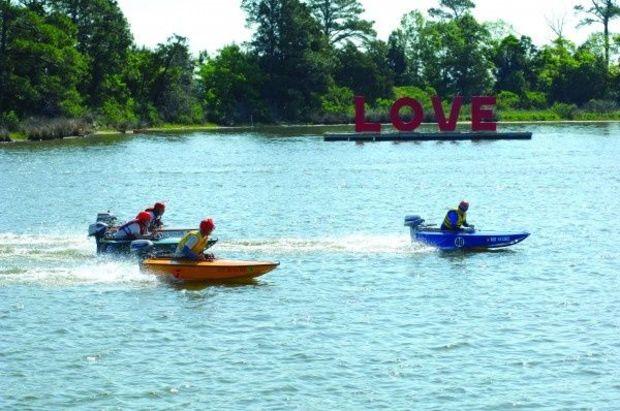 You wouldn’t believe the excitement and cheering from the crowd that lined the shore, pier, pits, and concession stands at the Urbanna, VA, races May 17. Hundreds of people were jumping up and down, clapping and hollering as the various classes of boats raced in front of them. More than 30 boats and 40 drivers competed in Saturday’s event, coming from as far away as Georgia.
The Urbanna Cup is only in its second year, but a core group of racers has already established itself through their experience and boat handling skills. Familiar names like Russ Bowler, Robert Edmonds, and Keith and Tara Carew racked up more first place medals, but that doesn’t mean they had an easy time with it, as newcomers were nipping closely in their wake. Cocktail Class racing is proving that it is a sport the whole family can get involved in, with some of the best competition showing up in the women’s and youth divisions.
You wouldn’t believe the excitement and cheering from the crowd that lined the shore, pier, pits, and concession stands at the Urbanna, VA, races May 17. Hundreds of people were jumping up and down, clapping and hollering as the various classes of boats raced in front of them. More than 30 boats and 40 drivers competed in Saturday’s event, coming from as far away as Georgia.
The Urbanna Cup is only in its second year, but a core group of racers has already established itself through their experience and boat handling skills. Familiar names like Russ Bowler, Robert Edmonds, and Keith and Tara Carew racked up more first place medals, but that doesn’t mean they had an easy time with it, as newcomers were nipping closely in their wake. Cocktail Class racing is proving that it is a sport the whole family can get involved in, with some of the best competition showing up in the women’s and youth divisions.
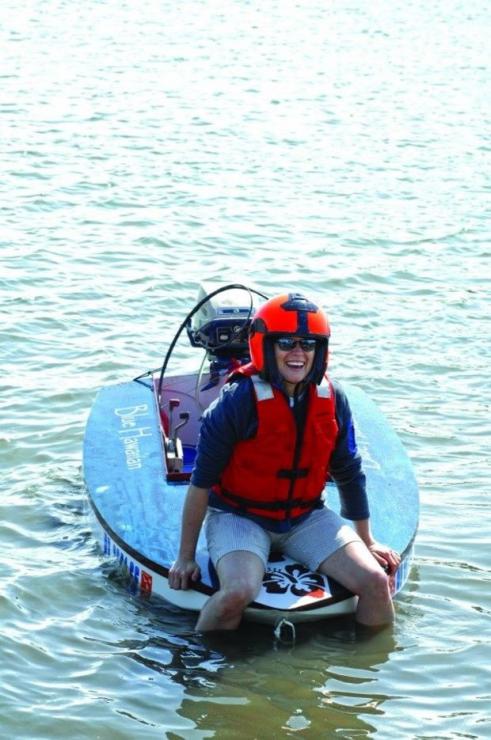 On Sunday, a Bootlegger Race series brought the crew out for another day of unsanctioned racing for both stock and non-stock boats and engines. Jack Pettigrew and his grandson Jack Pusser raced together in the relay races, and Mike and Dave Johnson pulled out their family’s 1950s-era Mercury Hurricane outboard (and destroyed the competition with it). Kim Granbery formally unveiled his new hull design, which PropTalk was lucky enough to test back in April to highly favored results.
Be sure to attend the Kent Island YC Regatta, Saturday, July 19, the next event for this special class of racing boats. They may not be lightning-fast, but they’re fun, and the crowd watching the action knows it. And that’s contagious in a good way.
Want more? Photographer Ned Rennolds and his drone were onhand for racing and caught footage that will have you ordering your very own Cocktail Class kit. Visit proptalk.com/cocktail-class-racing-drone for more.
Congratulations to the podium winners in each of the seven classes. In first, second, and third finishing order:
On Sunday, a Bootlegger Race series brought the crew out for another day of unsanctioned racing for both stock and non-stock boats and engines. Jack Pettigrew and his grandson Jack Pusser raced together in the relay races, and Mike and Dave Johnson pulled out their family’s 1950s-era Mercury Hurricane outboard (and destroyed the competition with it). Kim Granbery formally unveiled his new hull design, which PropTalk was lucky enough to test back in April to highly favored results.
Be sure to attend the Kent Island YC Regatta, Saturday, July 19, the next event for this special class of racing boats. They may not be lightning-fast, but they’re fun, and the crowd watching the action knows it. And that’s contagious in a good way.
Want more? Photographer Ned Rennolds and his drone were onhand for racing and caught footage that will have you ordering your very own Cocktail Class kit. Visit proptalk.com/cocktail-class-racing-drone for more.
Congratulations to the podium winners in each of the seven classes. In first, second, and third finishing order:
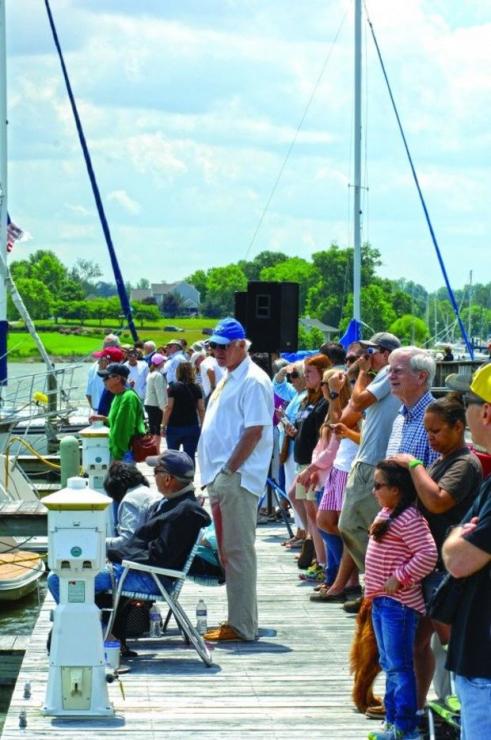 6 HP Women’s Classic:
Tara Carew, Gretchen Granbery, and Marie Schacht
6 HP Heavy Classic:
Robert Edmonds, Zach Ditmars, and Jim Schmicker
6 HP Mixed Classic:
Russ Bowler, Fred Allerton, and Kim Granbery
8HP Mixed:
Chase Bishop, Russ Bowler, and Todd Steffes.
6 HP Women’s Post-1979:
Kenleighe Longest, Tara Carew, and Shannon Haley
6 HP Heavy Post-1979:
Keith Carew, Jim Schmicker, and Todd Steffes
6 HP Mixed Post-1979:
Russ Bowler, Chris Riddick, and Ian Millington
6 HP Women’s Classic:
Tara Carew, Gretchen Granbery, and Marie Schacht
6 HP Heavy Classic:
Robert Edmonds, Zach Ditmars, and Jim Schmicker
6 HP Mixed Classic:
Russ Bowler, Fred Allerton, and Kim Granbery
8HP Mixed:
Chase Bishop, Russ Bowler, and Todd Steffes.
6 HP Women’s Post-1979:
Kenleighe Longest, Tara Carew, and Shannon Haley
6 HP Heavy Post-1979:
Keith Carew, Jim Schmicker, and Todd Steffes
6 HP Mixed Post-1979:
Russ Bowler, Chris Riddick, and Ian Millington
by Chris “Seabuddy” Brown